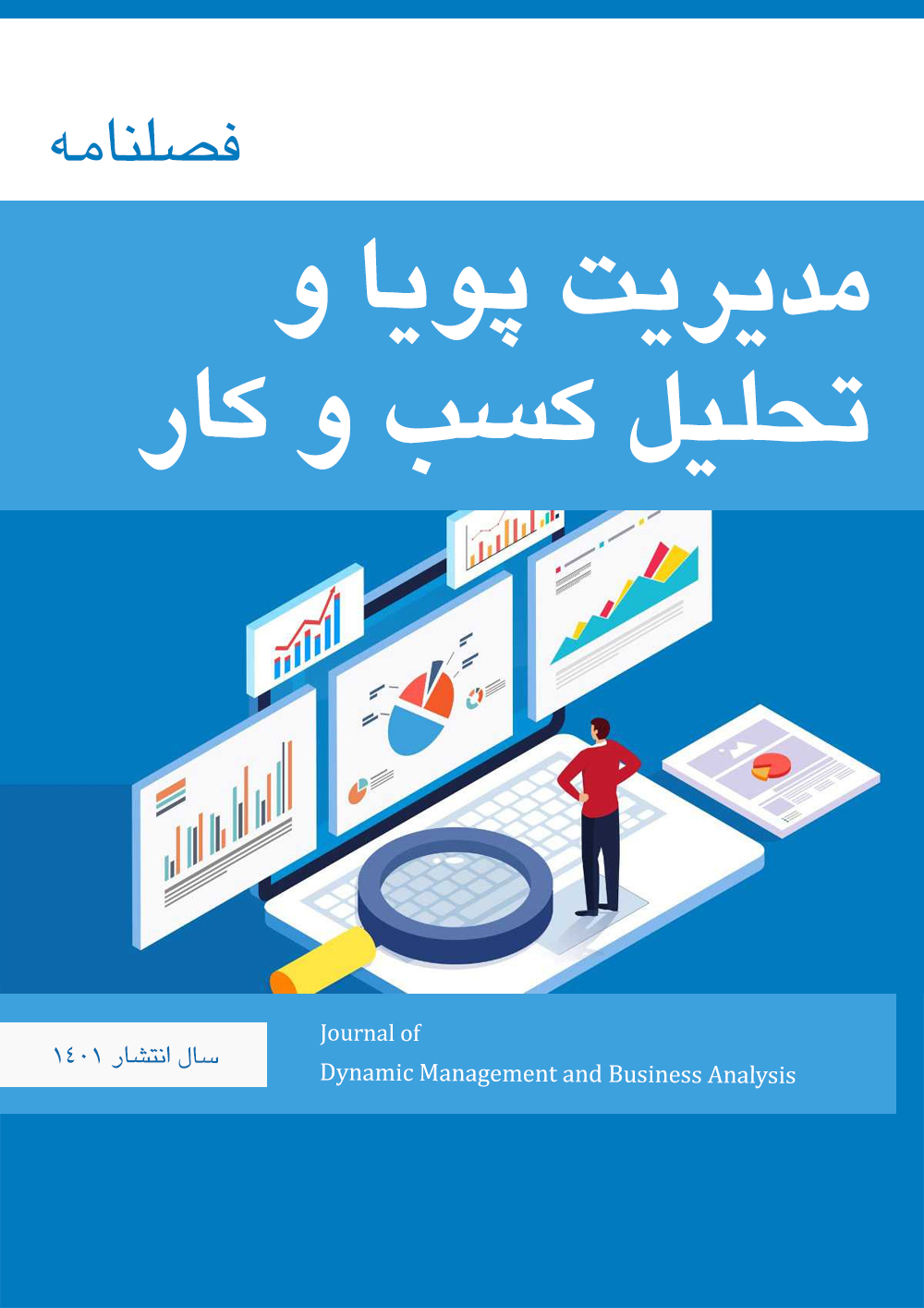اثرات آستانهای نرخ ارز و نرخ بهره واقعی بر نابرابری ثروت در ایران با تأکید بر کیفیت حکمرانی
کلمات کلیدی:
نرخ ارز, نرخ بهره واقعی, نابرابری ثروت, کیفیت حکمرانی , توسعه مالی طبقهبندی JEL: C24، E52، G12چکیده
هدف: هدف این پژوهش بررسی اثرات آستانهای نرخ ارز و نرخ بهره واقعی بر نابرابری ثروت در ایران با توجه به نقش کیفیت حکمرانی است. روششناسی: پژوهش حاضر از نظر هدف کاربردی، از نظر ماهیت توصیفی–تحلیلی و از نظر نوع دادهها پسرویدادی است. جامعه آماری شامل دادههای سری زمانی ایران طی سالهای ۱۳۷۰ تا ۱۴۰۲ میباشد. برای تحلیل دادهها از مدل رگرسیون انتقال ملایم نوع لجستیک (1LSTR) استفاده شد که در آن متغیر انتقال نرخ ارز تعیین گردید. پارامترهای مدل با روش حداکثر راستنمایی و الگوریتم نیوتن–رافسون برآورد شدند و آزمونهای پایایی (PP) و همانباشتگی یوهانسون–یوسیلیوس برای تأیید روابط بلندمدت بین متغیرها اجرا گردید. یافتهها: نتایج نشان داد که در بخش غیرخطی مدل، نرخ ارز، نرخ بهره واقعی و بازبودن تجارت با نابرابری ثروت رابطه مثبت دارند. در مقابل، توسعه مالی، کیفیت نهادی، نیروی کار و تشکیل سرمایه فیزیکی اثر منفی بر نابرابری ثروت دارند. مقدار آستانه متغیر انتقال (نرخ ارز) برابر با 0.45- و ضریب تعیین تعدیلشده مدل 0.87 بود که نشاندهنده برازش مناسب مدل است. آزمونهای تشخیصی نشان دادند که مدل فاقد خودهمبستگی و ناهمسانی واریانس است و تمامی رفتارهای غیرخطی متغیرها بهدرستی توسط مدل توضیح داده شدهاند.
نتیجهگیری: بر اساس نتایج، افزایش نرخ ارز و نرخ بهره واقعی موجب افزایش نابرابری ثروت در ایران میشود، در حالیکه بهبود کیفیت حکمرانی و توسعه مالی میتواند این اثرات منفی را تعدیل کند. بنابراین، سیاستگذاران اقتصادی باید با کنترل نوسانات نرخ ارز، مدیریت نرخ بهره و ارتقای کیفیت نهادی، در جهت کاهش نابرابری و دستیابی به رشد پایدار اقدام نمایند.
دانلودها
مراجع
Azizi, M., & Hosseini, Z. (2024). Wealth Inequality and the Effects of Monetary Policies in the Iranian Economy: An Econometric Model Approach. Quarterly Journal of Economic Research(40), 120-140.
Bradlow, B. H., & Kentikelenis, A. (2024). Globalizing green industrial policy through technology transfers. Nature Sustainability, 1-3. https://doi.org/10.1038/s41893-024-01336-4
Durand, C., Hofferberth, E., & Schmelzer, M. (2024). Planning beyond growth: the case for economic democracy within ecological limits. Journal of Cleaner Production, 437, 140351. https://doi.org/10.1016/j.jclepro.2023.140351
El Tinay, H. (2024). The semi-periphery and ecologically unequal exchange: carbon emissions and recursive exploitation. Environmental Sociology, 1-13. https://doi.org/10.1080/23251042.2024.2309407
Ghasemi, R., & Mousavi, F. (2023). Analyzing the Relationship Between Interest Rates and Income Inequality in the Iranian Economy. Journal of Financial and Banking Economics, 30(2), 150-180.
Heidari, A., & Abbasi, L. (2024). The Impact of Interest Rate Shocks on Wealth Distribution in Oil Economies. Journal of Energy Economics(14), 110-135.
Kazemi, M., & Gholami, S. (2024). The Impact of Monetary Policies on Income Distribution: A Case Study of Iran. Quarterly Journal of Financial and Banking Research(21), 95-115. https://doi.org/10.1016/B978-0-44-313776-1.00092-1
Magacho, G., Espagne, E., Godin, A., Mantes, A., & Yilmaz, D. (2023). Macroeconomic exposure of developing economies to low-carbon transition. World Development, 167, 106231. https://doi.org/10.1016/j.worlddev.2023.106231
Mousavi, Z., & Karimi, S. (2023). Investigating the Relationship Between Interest Rates and Wealth Inequality in the Iranian Economy. Iranian Economic Research, 28(3), 50-78.
Najafi, A., & Amiri, Z. (2023). The Relationship Between Exchange Rates and Income Inequality in Iran's Neighboring Countries. Regional Economics Scientific Journal, 12(1), 30-55.
Pirpour, H., & Samsami Mazra'e Akhound, H. (2025). Evaluating the effect of exchange rate fluctuations on core inflation using the stochastic Mundell-Fleming model and diagnosing the reciprocal relationship between exchange rate fluctuations and inflation deviations in Iran. Quantitative Economics.
Rahimi, S., & Jafari, M. (2024). Examining the Effect of Exchange Rate Fluctuations on Income Inequality in Iran. Quarterly Journal of Macroeconomics and Development(27), 80-105.
Rezaei, A., & Hosseini, N. (2024). The Impact of Exchange Rates on Income Inequality in Developing Countries. Quarterly Journal of Development Economics(53), 120-145.
Saeedi, A., Fallahi, M., & Esmaeilpour Moghadam, H. (2025). The Impact of Uncertainty from Monetary and Exchange Rate Policies on Financial Stability: A Markov Regime-Switching Approach in Iran's Economy. Monetary and Financial Economics. https://doi.org/10.22067/mfe.2025.93017.1537
Steinberger, J., Guerin, G., Hofferberth, E., & Pirgmaier, E. (2024). Democratizing provisioning systems: a prerequisite for living well within limits. Sustainability: Science, Practice and Policy, 20(1), 2401186. https://doi.org/10.1080/15487733.2024.2401186
Tausch, L., & Magacho, G. (2024). Challenges in the Transition to a Low-Carbon Economy for Developing Countries: Estimating Capital-Use Matrices and Imported Needs. https://doi.org/10.1080/09535314.2025.2520308
دانلود
چاپ شده
ارسال
بازنگری
پذیرش
شماره
نوع مقاله
مجوز
حق نشر 2025 Mohsen Khanaki, Masoud Sofi Majidpour, Mahmoud Mahmoudzadeh, Mehdi Fathabadi (Author)

این پروژه تحت مجوز بین المللی Creative Commons Attribution-NonCommercial 4.0 می باشد.






